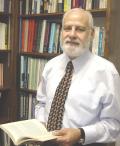Mahmoud Haddara
B.Sc. (Hons.) (Ain-Shams), M.S., PhD (Berkeley), C.Eng., P.Eng.
- Professor Emeritus
Contact Information
Ph: N/A
Em: mhaddara[at]mun.ca
Office: N/A
Research Interests
Parametric Identification; Ship Motion; Structural Dynamics; Stability and Reliability; Risk-based Maintenance
Personal Profile
I obtained an honours bachelor degree in mechanical engineering from Ain Shams University, Egypt in 1963 and a M.Sc. and a PhD in naval architecture from the University of California, Berkeley. I spent a year as a postdoctoral fellow at Berkeley, then returned to Egypt to work for the Suez Canal Authority in its Port Said Shipyard. In 1980, I moved to Kuwait to work at the Kuwait Institute of Technology where I stayed until moving to Canada in 1986. At the Kuwait Institute of Technology, I established a Marine Division within the Department of Mechanical Technology, was head of the Department of Mechanical Technology (1981-1983) and Assistant Director for Academic Affairs (1983-1986).
In 1986, I joined Memorial University of Newfoundland, where I taught in the naval and mechanical disciplines. I chaired the Ocean and Naval Architectural Engineering discipline (1993-1998), became an Associate Dean for Graduate Studies in 1998, Acting Dean (April - October 2000) and Interim Dean (July 2002- October 2003).
I have also acted as a scientific adviser to a number of companies and research centres on various projects dealing with developing solutions to different problems in the area of ocean and naval architectural engineering. These include:
a. Development of a Ship Predictor System;
b. Development of Ship Stability Monitoring System;
c. Study of reliability of offshore supply vessels;
d. Study of roll damping; and,
e. Parametric identification of dynamic stresses in ships at sea.
Currently, my research focuses on using reliability theory and risk analysis to develop risk based optimum maintenance policies for large engineering systems, and the development of continuous monitoring systems for ship stability, stresses, and motions.
